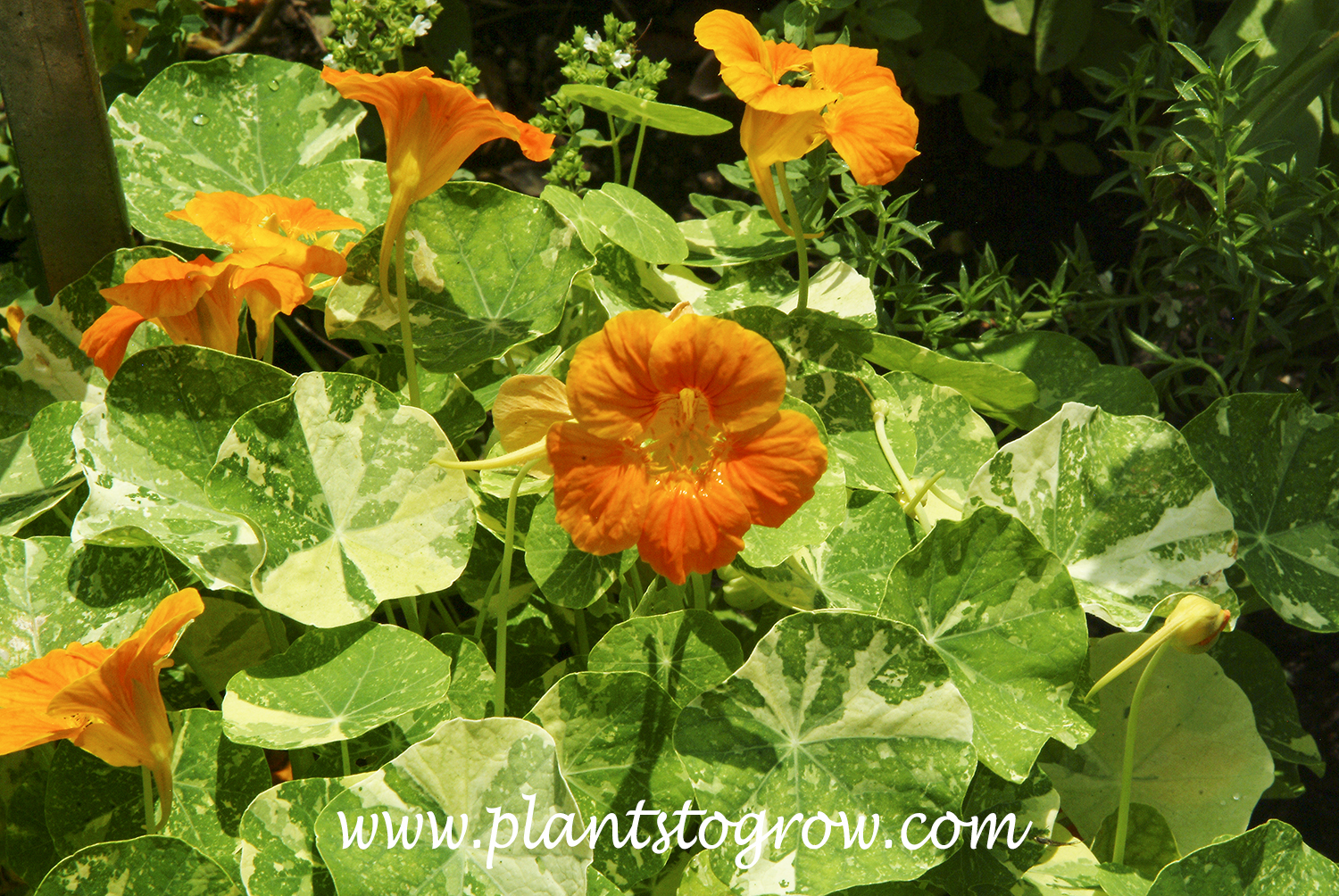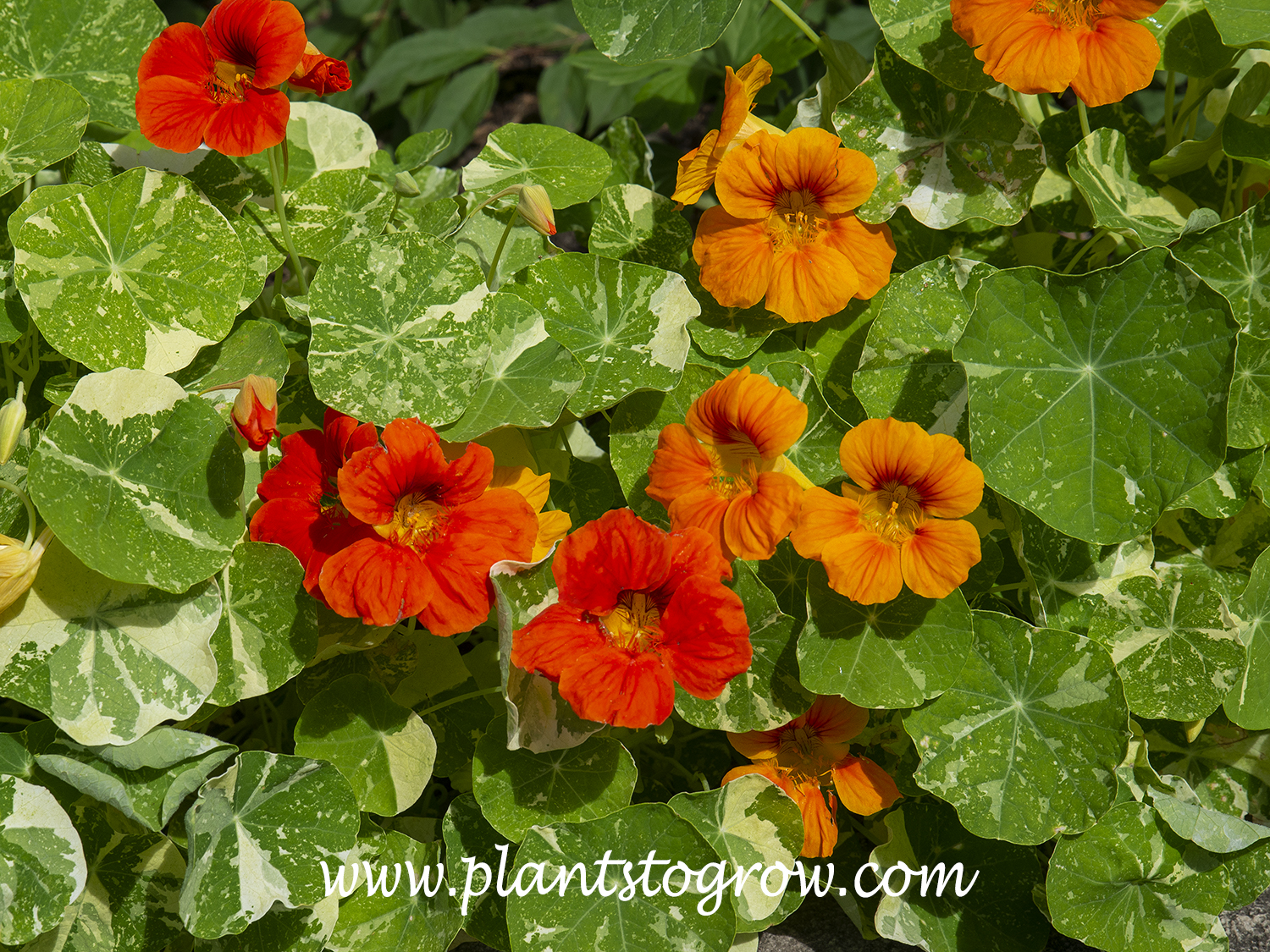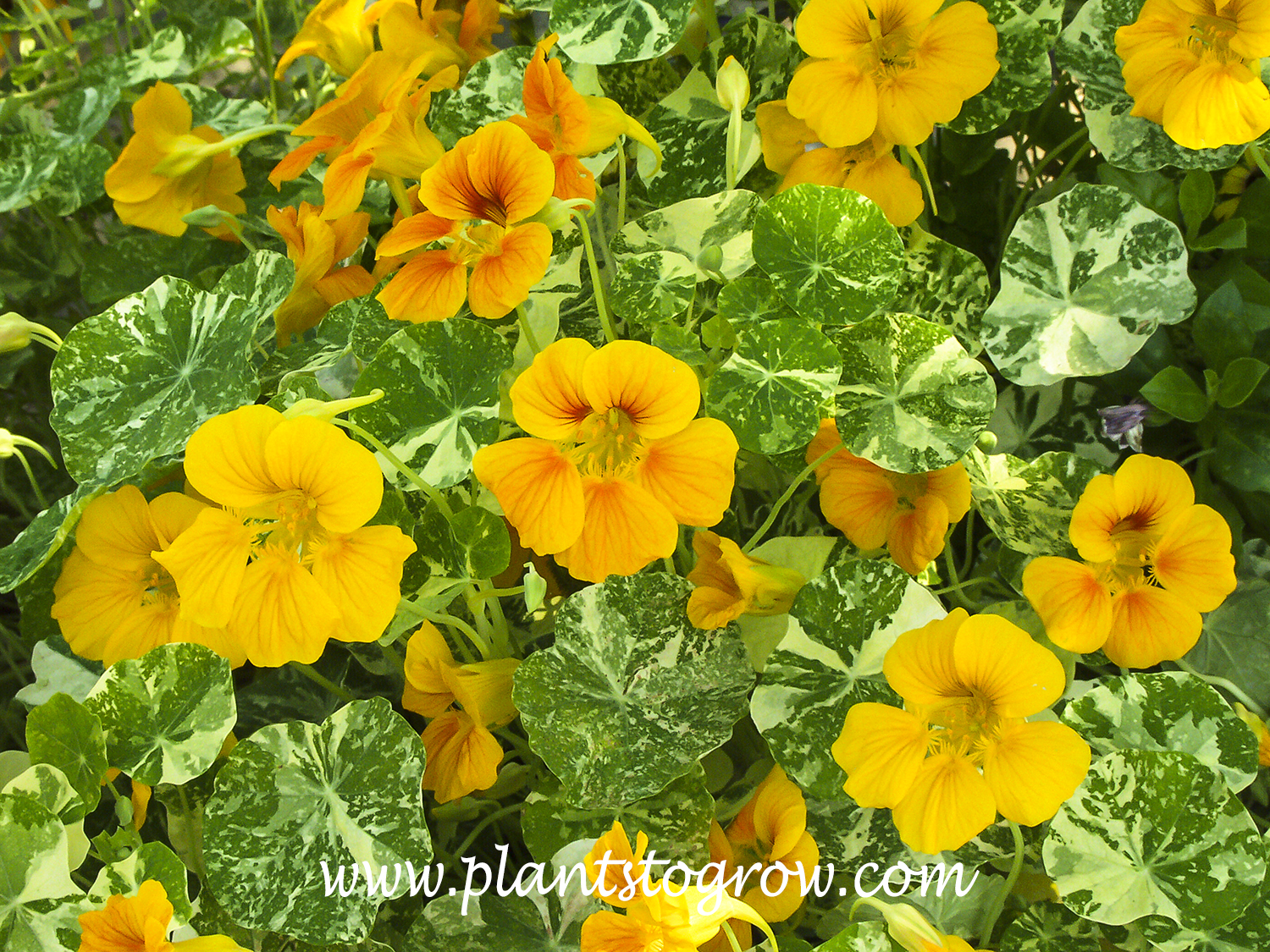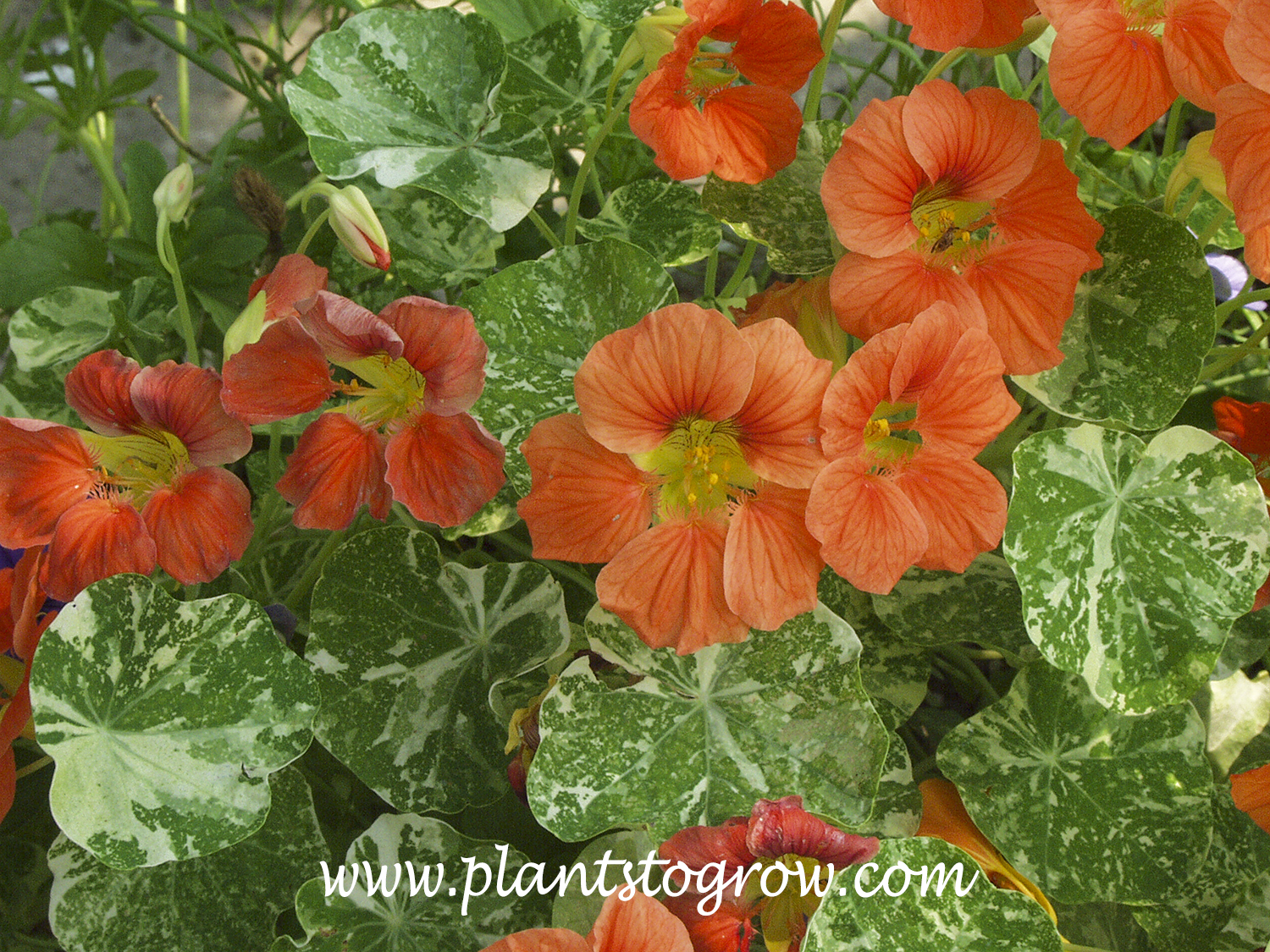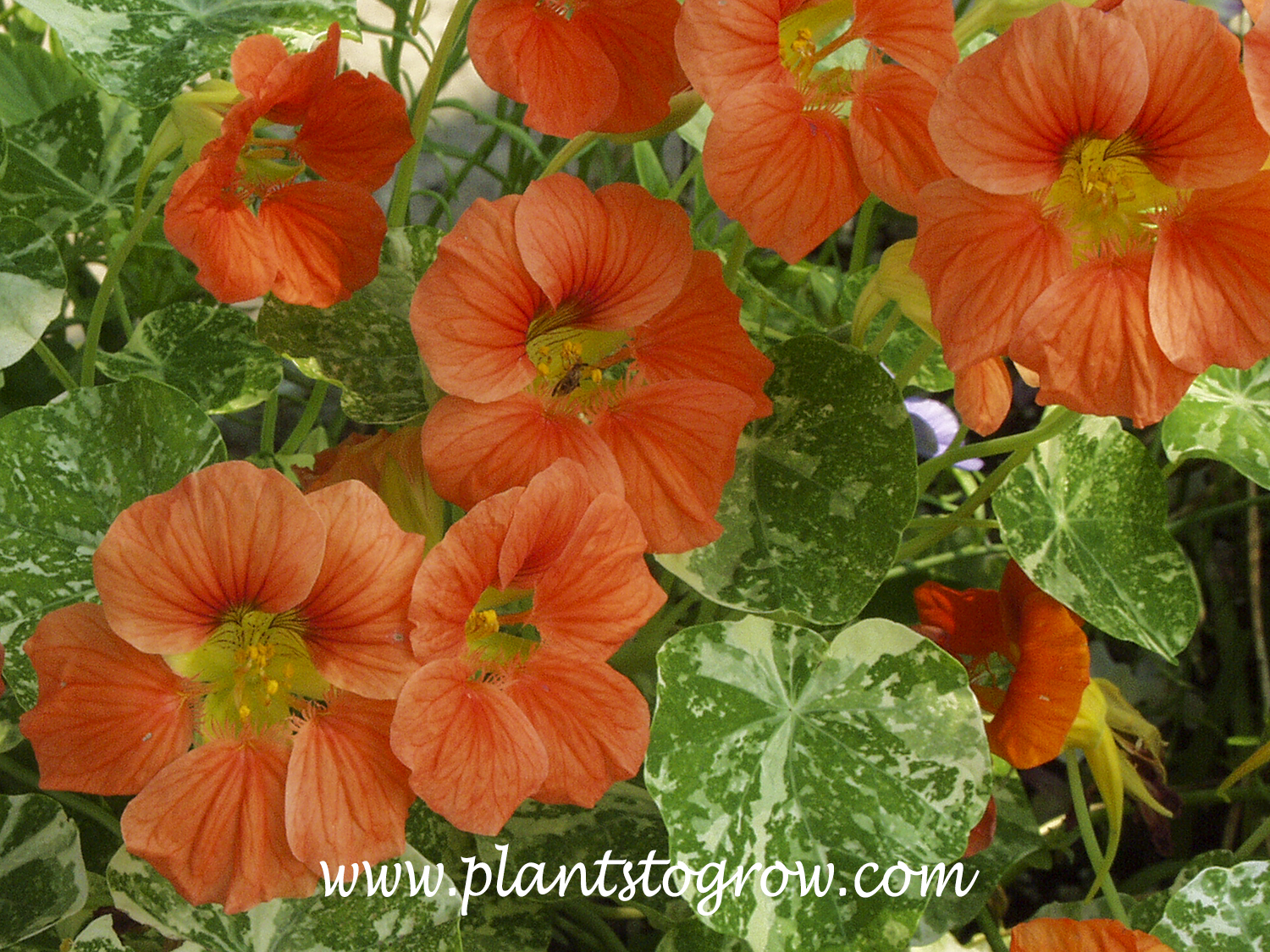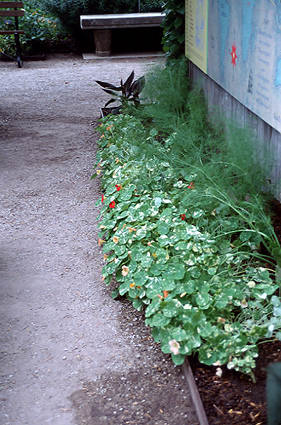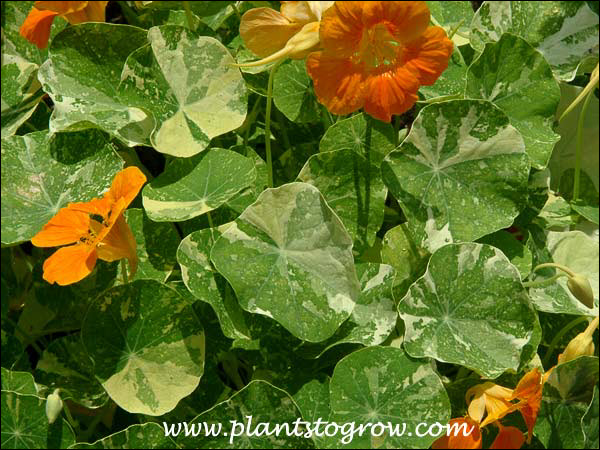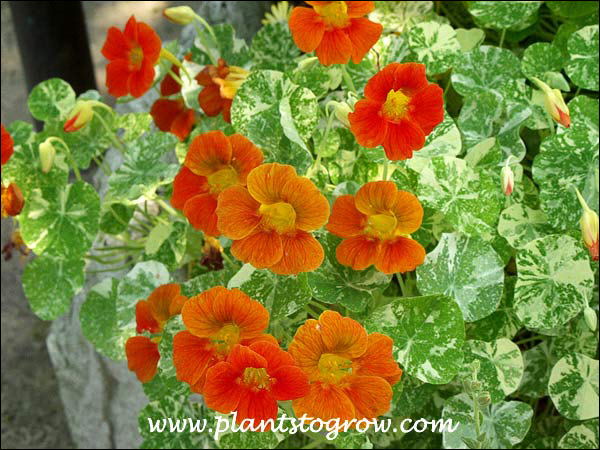| Description | Alaska Nasturtium (Tropaeolum) is a variegated form of the common Nasturtiumthat comes true from seed. All parts are edible. |
|---|---|
| Pronunciation | (troo-PEE-oo-lum)(MA-jus) |
| Plant Type | Annuals |
| Hardiness Zone | 9-11, annual else where |
| Sunlight | full sun, light shade |
| Moisture | prefers evenly moist, quickly wilts if too dry, easily rots if to wet |
| Soil & Site | average, well-drained |
| Growing Media | average, well-drained |
| Temperature | tolerates colder temperatures, newer growth will be damaged in freezing conditions |
| Flowers | 5 petals, 2-2 1/2" across, funnel shaped with large spurs off of the back, colors: gold, orange, salmon and mahogany |
| Fruit | can be pickled |
| Leaves | variegated, rounded, and remind me of a lily pad, botanically called peltate; leaves contain mustard oil and are used in salads along with the flowers and buds |
| Dimensions | around 12" tall by equal spread |
| Maintenance | plants tend to flop, and pruning and support is needed to maintain good form |
| Propagation | Seeds are very large, and can be planted "in situ" after the danger of frost has passed or direct seed into a peat pot. Nicking (scarification) or soaking overnight increases germination |
| Native Site | Its native range is in the cool highlands of Mexico and Central America. |
| Cultivar Origin | First introduced in 1684, earliest American citation Bethabara, North Carolina in 1759 (#108). |
| Misc Facts | Edible leaves, flowers, and seedpods. Tropaeolum comes from the Latin word tropaeum meaning “a trophy”. The leaves were thought to resemble the helmets and shields that were present at Roman triumphs. Nasturtium means bitter leaves. |
| Author's Notes | I have grown this plant many times. I like how the variegation can brighten up a spot in the garden. |
| Notes & Reference | #28-Cottage Garden Annuals(Clive Lane), #37-The Contained Garden (Kenneth A. Beckett, David Carr, David), #108-Restoring American Gardens (Adams)) |

Cart
